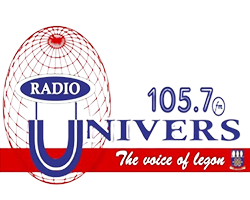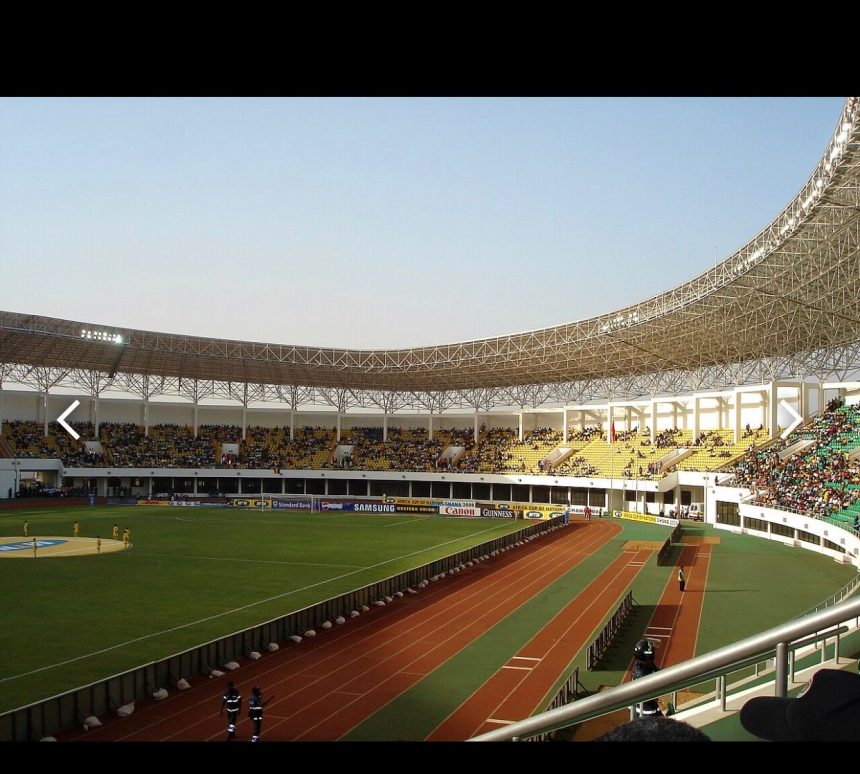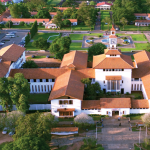The recent ban on Ghana’s stadiums by the Confederation of African Football (CAF) has shone a harsh light on the country’s sports infrastructure, exposing a legacy of unfulfilled promise.
Sixty Seven years after independence, Ghana’s five main stadiums – Accra Sports Stadium, Kumasi Sports Stadium, Tamale Sports Stadium, Sekondi-Takoradi Stadium, and Cape Coast Sports Stadium – lie in disrepair, a far cry from the FIFA-standard facilities that should be the pride of a nation passionate about football.
As Ghana hosted the prestigious African Cup of Nations in 2008, it seemed like a new era of football excellence had dawned, but today, the question lingers: what went wrong, and can these iconic stadiums be restored to their former glory?
ACCRA SPORTS STADIUM
Accra Sports Stadium, a 40,000-seat iconic venue and cornerstone of Ghanaian football since 1961, underwent a major transformation in 2007 to meet FIFA standards for the 2008 African Cup of Nations. Despite an additional 22.4 million Ghana cedis allocated for renovations in 2020, the stadium remains incapable of hosting CAF and FIFA matches four years later. Currently, it serves as the home ground for prominent clubs Hearts of Oak, Accra Lions FC, and Great Olympics, but its potential remains untapped due to neglect and disrepair.
KUMASI BABA YARA SPORTS STADIUM
The Baba Yara Stadium, a 40,528-seat iconic venue opened in 1959, boasts a rich history of hosting prestigious events, including African Cup of Nations tournaments and World Cup qualifying matches. Despite undergoing transformations in 1971, 1977, the stadium’s condition has deteriorated. A staggering 21.1 million Ghana cedis was spent on renovations just four years ago, yet it still fails to meet CAF and FIFA standards due to uneven surface , poor drainage system insufficient grass cover.
This shocking decline raises concerns about mismanagement and wasteful expenditure, leaving the stadium incapable of hosting international matches.
SEKONDI/ESSIPONG SPORTS STADIUM
The Sekondi Stadium, built in 2008 to host the African Cup of Nations (AFCON), has fallen into disrepair. Originally designed for football matches and serving as the home ground of Sekondi Hasaacas FC, the 20,000-seat stadium received GHC 41.9 million in renovation funds in 2023. However, just a year later, the facility remains in a deplorable state, plagued by leaking roof, broken seats, inadequate lighting, among others.
This neglect has rendered the stadium unusable, highlighting the need for urgent maintenance and rehabilitation.
ALIU MAHAMA SPORTS STADIUM ( TAMALE SPORTS STADIUM)
The Tamale Sports Stadium, a 20,000-capacity venue built in 2008 for the African Cup of Nations (Afcon), has been neglected since its inception, with no maintenance or upkeep.
As a result, the facility has fallen into disrepair, with the VVIP section’s roof in a state of disrepair, toilet facilities in a deplorable condition ,popular stands in a state of neglect, among others.
This neglect has led to the Confederation of African Football (CAF) and the Federation of International Football Association (FIFA) consistently rejecting the stadium as a host venue for international matches, a devastating consequence of the lack of maintenance and investment in the facility’s upkeep.
CAPE COAST SPORTS STADIUM
The Cape Coast Stadium, a 15,000-seat venue inaugurated in 2016, has hosted Ghana Premier League matches and international friendlies.
However, despite claims of renovation, the stadium still fails to meet the standards set by FIFA and CAF.
This is a source of embarrassment for Ghana, a nation passionate about football, as it hinders the hosting of high-profile international matches and tournaments.
CALL FOR ACTION
The state of our stadiums is a stark reminder of the unfulfilled potential of Ghanaian football. Yet, amidst the neglect and decay, we find a chance to revive the memories, the triumphs, and the heartbreaks that have shaped our beloved sport.
Let us seize this moment, join forces, and rebuild our stadiums into beacons of excellence. We owe it to ourselves, our children, and the generations that have cheered on our teams with pride.
The time for excuses is over; the time for action is now.
Together, we can restore the glory of Ghanaian football and create a brighter future for all.
–
Story by Erica Odeenyin Odoom|univers.ug.edu.gh





